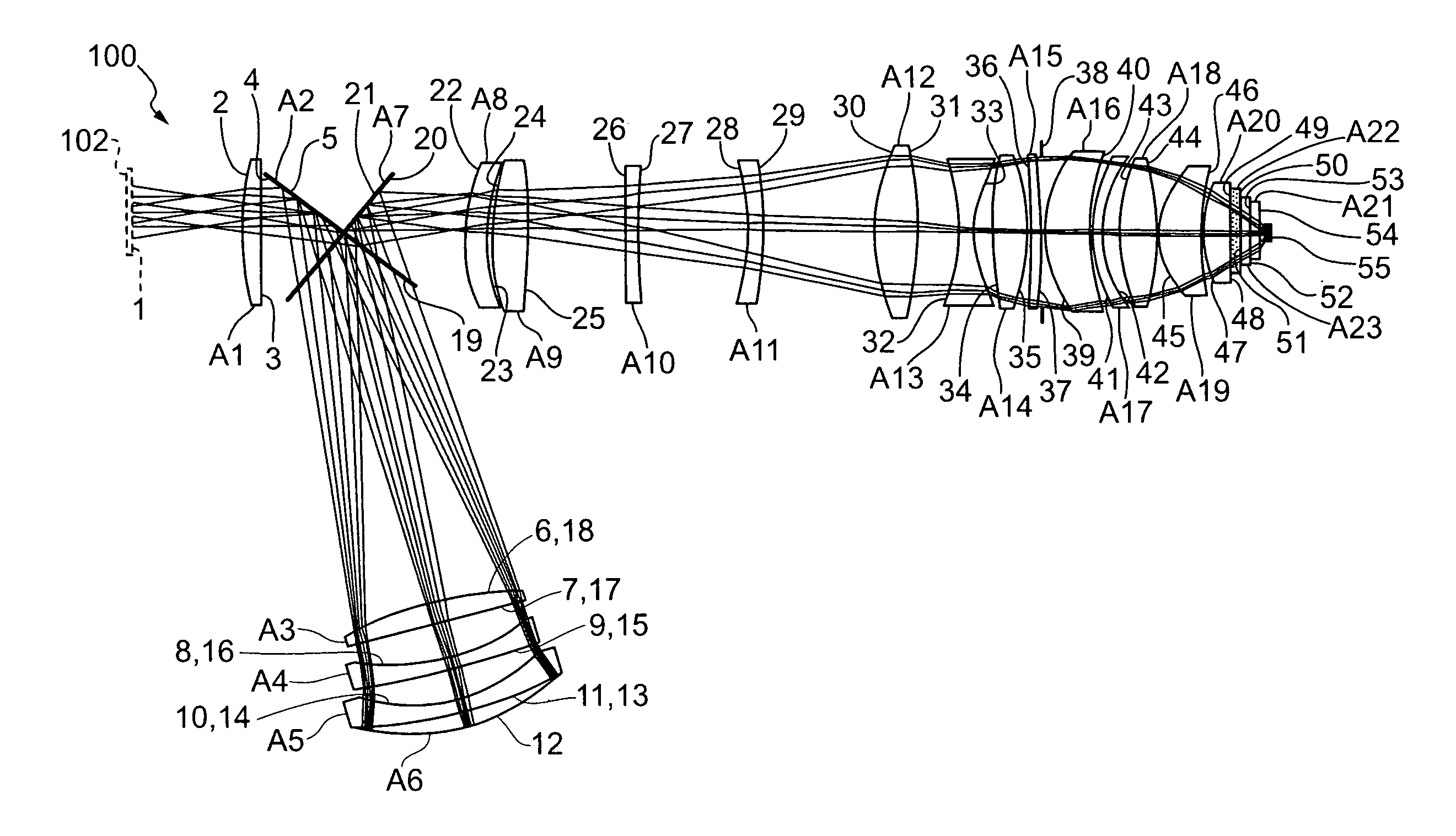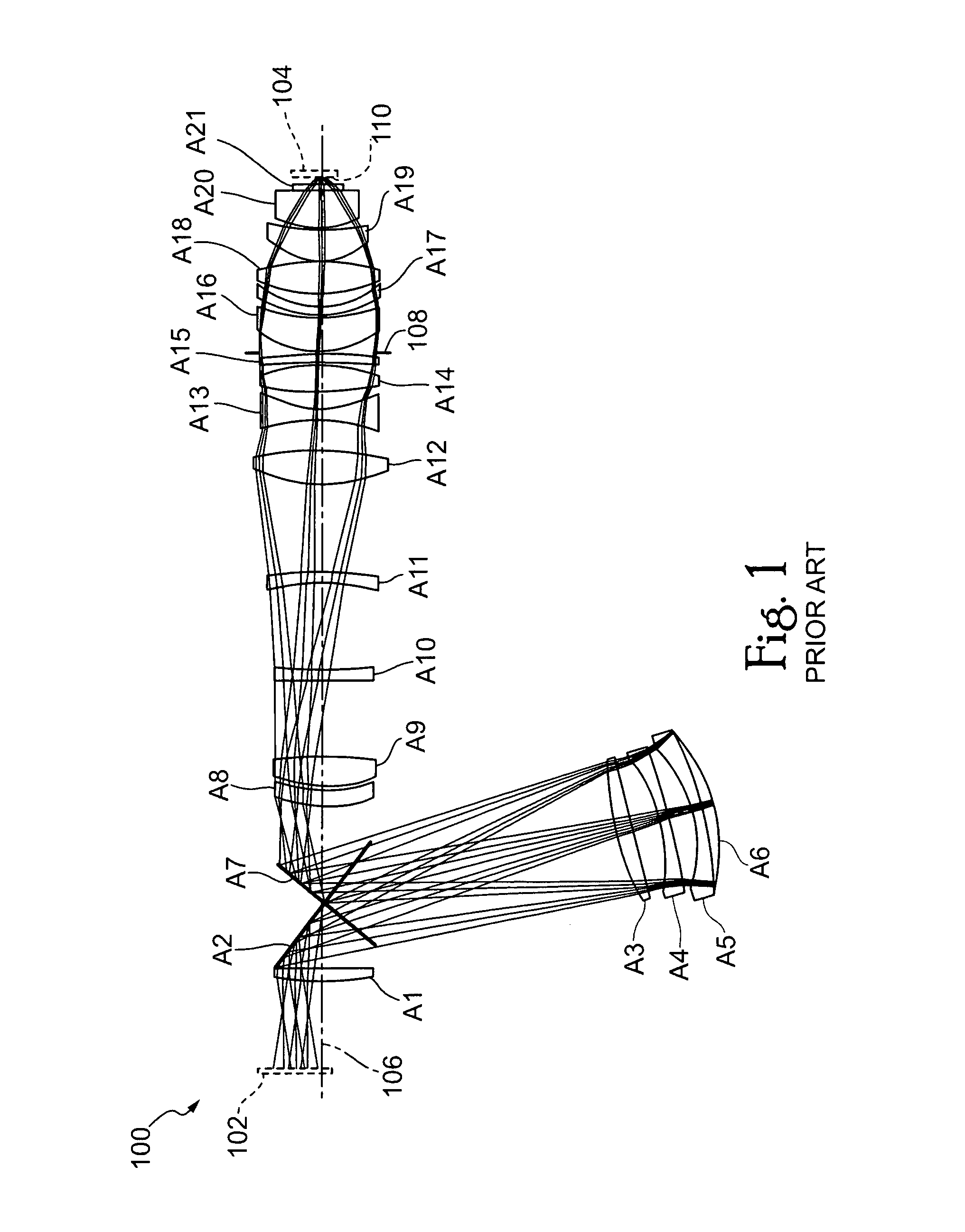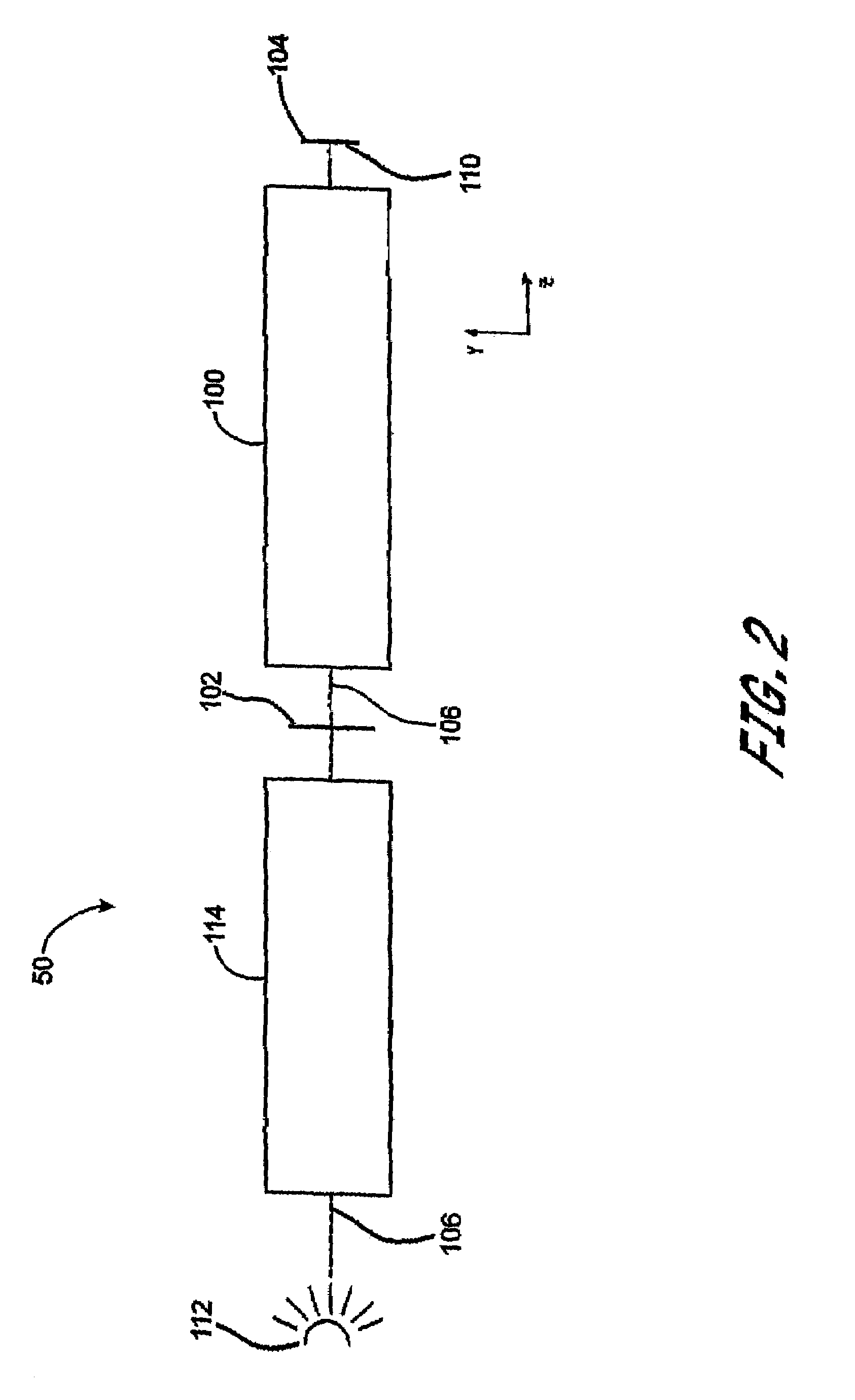Methods for reducing polarization aberration in optical systems
a technology of optical system and aberration, applied in the direction of instruments, electrical appliances, basic electric elements, etc., can solve the problems of reducing image resolution, introducing field distortion, and high cost of crytallographic orientation,
- Summary
- Abstract
- Description
- Claims
- Application Information
AI Technical Summary
Benefits of technology
Problems solved by technology
Method used
Image
Examples
Embodiment Construction
[0048]It is well-known that cubic crystalline materials like calcium fluoride are favored in lithography systems such as the high performance photolithographic tools used in the semiconductor manufacturing industry. These crystalline materials are substantially transmissive to short wavelength UV light, which provides for high optical resolution. It is also well-known, however, that these cubic crystalline materials exhibit intrinsic birefringent, i.e., an inherent anisotropy in refractive index.
[0049]Birefringence, or double-refraction, is a property of refractive materials in which the index of refraction is anisotropic, that is, the index of refraction and thus the phase velocity is different for different polarizations. For light propagating through a birefringent material, the refractive index varies as a function of polarization and orientation of the material with respect to the polarization and thus the propagation direction. Unpolarized light propagating through a birefring...
PUM
| Property | Measurement | Unit |
|---|---|---|
| wavelength | aaaaa | aaaaa |
| wavelength | aaaaa | aaaaa |
| optical wavelength | aaaaa | aaaaa |
Abstract
Description
Claims
Application Information
 Login to View More
Login to View More - R&D
- Intellectual Property
- Life Sciences
- Materials
- Tech Scout
- Unparalleled Data Quality
- Higher Quality Content
- 60% Fewer Hallucinations
Browse by: Latest US Patents, China's latest patents, Technical Efficacy Thesaurus, Application Domain, Technology Topic, Popular Technical Reports.
© 2025 PatSnap. All rights reserved.Legal|Privacy policy|Modern Slavery Act Transparency Statement|Sitemap|About US| Contact US: help@patsnap.com



